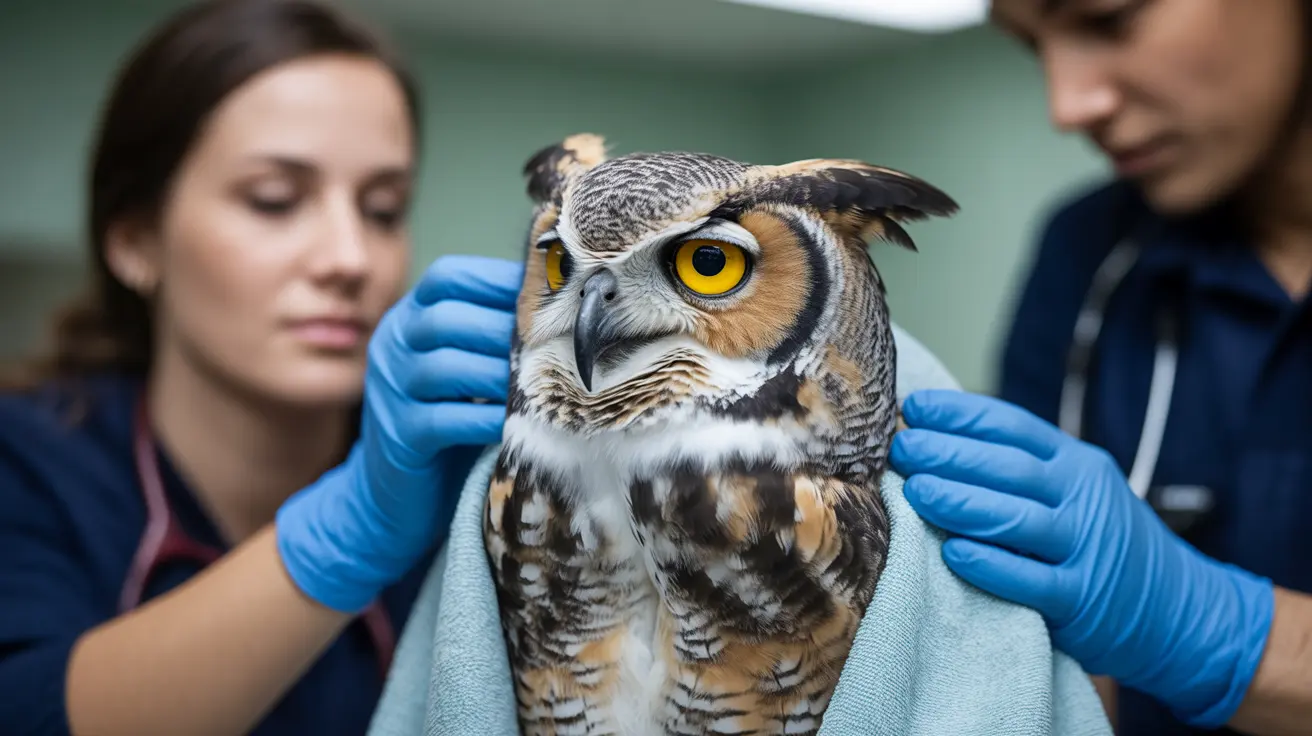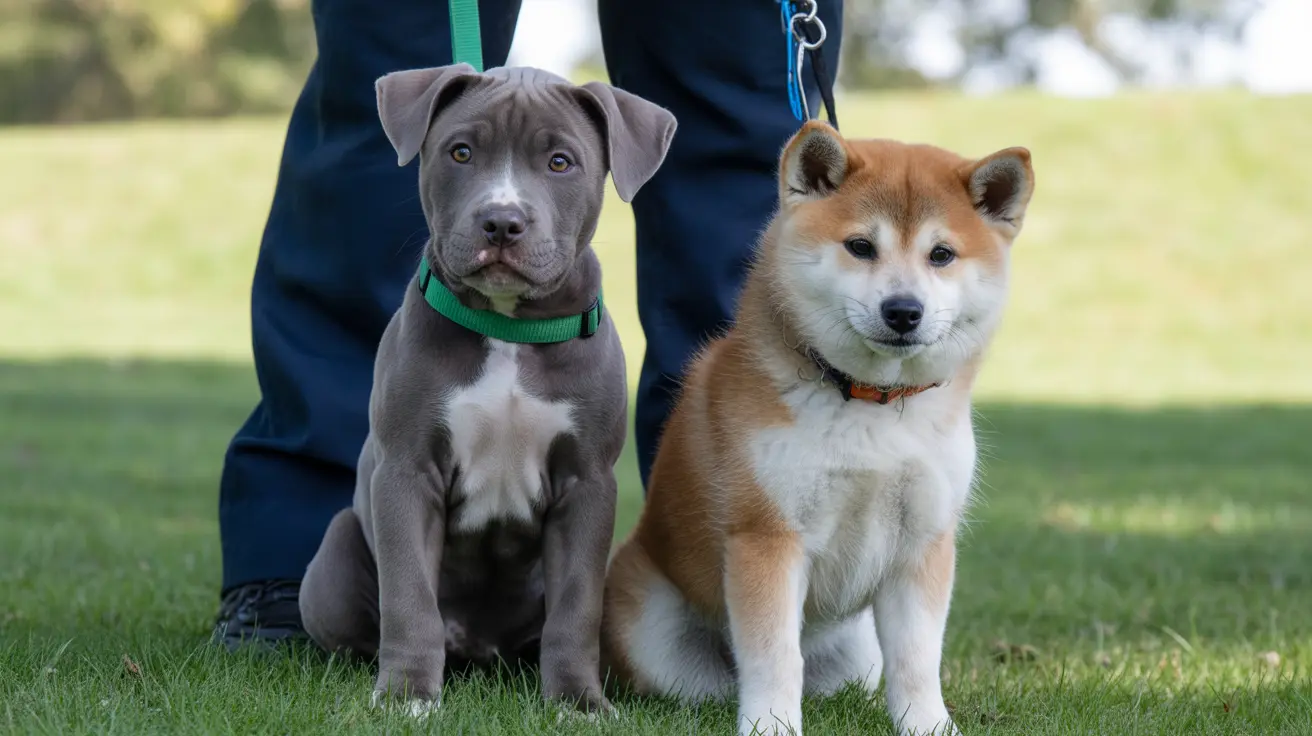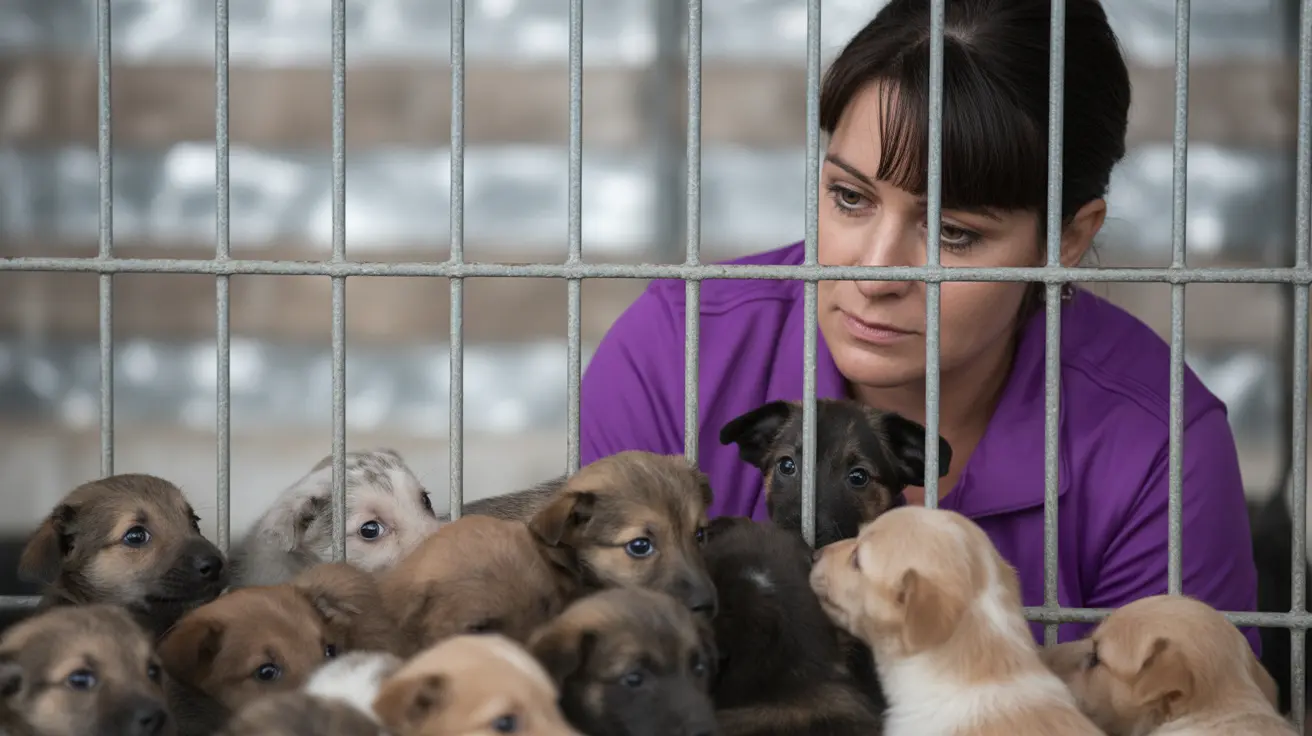Best Friends Animal Sanctuary Takes Action
The rescue operation was handled by experts who specialize in raptor rehabilitation, showcasing the meticulous process required when dealing with an owl covered in concrete. Wildlife rehabilitation facilities like these serve as crucial lifelines for injured and trapped wild animals, employing specialized techniques developed over years of experience with various species.
Great horned owls are particularly resilient birds, but being encased in concrete presents unique challenges that require immediate professional intervention. The hardening material can restrict movement, affect breathing, and damage feathers essential for the owl's survival in the wild.
Wildlife Rehabilitation Techniques for Construction Site Animal Rescue
When rescuing birds from construction sites, wildlife specialists follow established protocols to ensure both human and animal safety. The process of cleaning concrete off a bird requires patience, specialized solvents, and careful attention to the animal's stress levels throughout the procedure.
Professional rescuers typically assess the bird's overall condition first, checking for injuries beneath the concrete coating. This initial evaluation helps determine the most appropriate treatment approach and recovery timeline. The cleaning process itself must be gentle enough to preserve the bird's natural feather structure while effectively removing all traces of the hardened material.
The Importance of Silent Flight for Owl Recovery
One critical aspect of great horned owl rehabilitation involves preserving their remarkable ability for silent flight. This hunting adaptation requires perfectly intact feather structures, making the concrete removal process even more delicate. Damaged flight feathers can significantly impact an owl's ability to hunt and survive once released back into the wild.
Recovery specialists monitor the owl's wing function throughout the rehabilitation process, ensuring that their natural hunting capabilities remain uncompromised. This attention to detail is what separates successful wildlife rehabilitation from simple animal rescue.
Injured Owl Care and the Owl Recovery Process
The rehabilitation timeline for an owl trapped in cement mixer situations varies depending on the extent of exposure and any underlying injuries. Professional wildlife care involves providing appropriate housing, nutrition, and medical treatment while minimizing human contact to preserve the bird's wild instincts.
During recovery, veterinarians and wildlife specialists monitor the owl's eating habits, flight capabilities, and overall behavior. These assessments help determine when the bird is ready for release to wild habitats where it can resume its natural role in the ecosystem.
For pet owners who might encounter similar situations, it's important to contact local wildlife authorities immediately rather than attempting rescue independently. Wild raptors require specialized handling and can cause serious injuries even when distressed.
Learning from Wildlife Rescue Success Stories
This remarkable rescue demonstrates the positive impact that dedicated animal sanctuary owl programs have on wildlife conservation. By sharing these stories, rescue organizations help educate the public about coexisting with wildlife and recognizing when professional intervention is needed.
Construction companies and contractors can also learn from incidents like these, implementing wildlife-aware practices that reduce the likelihood of animals becoming trapped in equipment or materials.
Frequently Asked Questions
- How do you rescue an owl covered in concrete? Professional wildlife rescuers use specialized solvents and gentle cleaning techniques to remove concrete while preserving the bird's feather structure. This process requires expertise to avoid injury and must be performed by trained rehabilitation specialists.
- What should I do if I find a wild bird trapped in construction equipment? Contact your local wildlife rehabilitation center or animal control immediately. Do not attempt to free the bird yourself, as wild raptors can cause serious injuries and require specialized handling techniques for safe rescue.
- Can an owl survive after being encased in cement? Yes, with prompt professional intervention, owls can make full recoveries from concrete exposure. Success depends on how quickly the bird receives specialized care and whether the concrete has caused underlying injuries or respiratory issues.
- How long does it take for an owl to recover from concrete exposure? Recovery time varies depending on the extent of exposure and any injuries sustained. Rehabilitation can take several weeks to months, during which specialists monitor the bird's health, flight capabilities, and hunting instincts before release.
- Why is silent flight important for great horned owls in the wild? Silent flight allows great horned owls to hunt effectively by approaching prey undetected. This adaptation requires perfectly structured wing feathers, making careful rehabilitation crucial for owls that have suffered feather damage from concrete or other substances.
This successful owl rescue serves as a powerful reminder that wildlife and human activities can coexist when communities support professional rescue organizations and remain vigilant about protecting the animals that share our environments.






